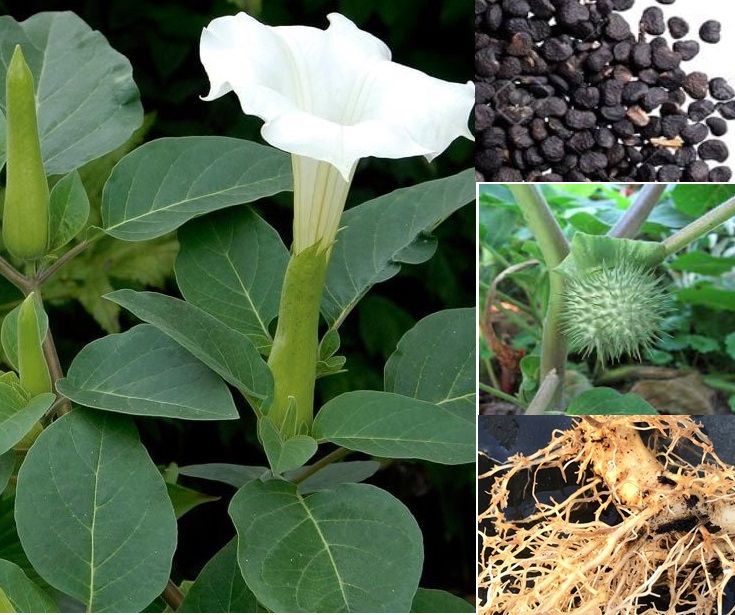DHATTURA

| संस्कृत: | धत्तूर, कनक, उन्मत्ता | ગુજરાતી: | ધતૂરો | |
| हिन्दी: | धतूरा | Binomial: | Datura metel |
Introduction:
Dhattura plant is a shrub growing up to 3 to 6 feet in height. There are many varieties of dhattura plant, Datura metel and Datura stromanium is widely found in India. In Shushruta Samhita varieties are described as ‘kanaka’ and ‘unmatta’. Two varieties of plants are black and white, black has higher medicinal value. The plant is poisonous and before using in Ayurvedic medicines, needs to be purified. Seeds, flowers, root bark and leaves are used in Ayurvedic medicines. Leaves are broad oval and green, dark violet in colour, fruits are ovate covered with spikes. Flowers are about 6-8 inches long, white, yellow, purple in colour, having pleasant smell. Flowers are offered to lord shiva.
Purification of Dhattura:
Soak the seeds in cow urine for 12 hours. Wash the seeds with clean water and tie in muslin cloth and suspended in cow milk for three hours. Now boil cow milk for three hours. Take out the seeds and wash in clean water. Dry the seeds and remove the skin. Keep in airtight container for future use.
Uses:
- Inhale fumes of Panchang (root, leaves, flower, fruit, and bark) to treat Cough, asthma and respiratory problems.
- On inflammations, apply warm paste of juice of dattura leaves with lime and guggul.
- On scabies and other skin diseases apply thin paste of seeds.
- On cracked feet apply paste of seeds mixed in rock salt and mustard oil.
- In earache instill drops of datura leaves juice.
- On scorpion bite apply juice of datura leaves.
- Purified seed powder in small quantity is given to cure fever of all types.
- Purified seed powder in small quantities is given as sedative and to calm the mind.
Caution:
Dattura is highly poisonous, any preparations containing Dattura to be taken under guidance of expert Vaidyas only.